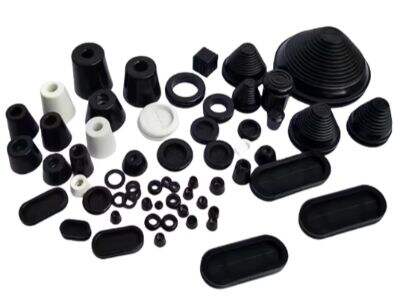Көптеген машиналар мен құрылғыларда қапталғыш салыстар бірнеше ең маңызды компоненттердің бірі. Ол салыстар қабаттағы орналасуы керек емес болатын әріп, су және басқа шейкілерден қорғайды. Бұл машиналар мен құрылғылардың іске қосылуын және жұмыс істейтуін көмектеседі. Автомобилдерде, түйіндіктерде және әдетте үй жанақтарының терезелерінде қапталғыш салыстар қолданылады, сондықтан да қоғамдық және тұрақты қорғаныс қажет. Енді, осы салыстардың нешепе болғаны, оларды жасау үшін қандай материалдар пайдаланылып жатқан және олар қалай жұмыс істейді туралы көбірек үйреніңіз!
Қапталғыш салыстарда қолданылатын материалдар түрлері
Қапталғыш салыстар әртүрлі материалдарда қорытындыланады. Көптеген ретте пайдаланылатын материалдар авто үлкендің резиналық қорғаушы , силікон және пішін.
Қапталғыш салыстардың бөліктері
Жабықтық қосмаларында екі негізгі компонент бар — негізгі материал және қабырғалы, қосулық түріндегі материал. Негізгі материал сама жабықтықтан тұратын нәрседен тұрады. Бұл жабықтық қосмасын күшті және анықтайтын. Осы бөлік жабықтық қойылатын қандай да бір поверхняға қосылады, жабықтықтың қажетті орында салыстырып, іс-әрекеттерін орындауға көмектеседі. Екісі де бірге жұмыс істемесе, жабықтық қосмалары әсерлі болмайды.
Жабықтық қосмасында: Материал түрлері
Жабықтық қосмаларын жасау үшін пайдаланылатын көптеген түрлі материалдар бар. Оның ең маңызды бірнеше түрін келтіремін:
Полимерлердің бірнеше мысалдары: Бастапқы түрде, ежелік резиналық жабықтық эластик және қозғалысқа дейінгі мәдениет. Бұл себептімен, vapemate әртүрлі температуралық диапазондарда жұмыс істеуге болады. Бұл оны ыстық пен суық шамамен әртүрлі деңгейде істейтуге мүмкіндік береді. Сонымен қатар, химиялық және маслармен қатарған көптеген өнеркәсіптік қолданбаларда резина пайдаланылатынының бір себебі бұл қояндылық.
Силикон: Силикон дағдылы және ұзақ жүрімді материалдың басқа бір мысалы. Ол өте жиһаз температураларда да жақсы ұстап қалады, сондықтан суық қабаттың қапындағы жабықтар үшін мүкеммелік. Бұл оның жиһазға тейінгендікке немесе түрлі түрде түсірілген кезде түбесін жою немесе түрлі түрде түрленуін аңлатады. Силикон әдетте әлдеқайда гибкий болғандықтан, бұл көптеген жағдайларда жақсы жабық болып табылады.
Қорық: Қорық нерсе мен сұйық материал. Оның жақсы суреттілігі бар, сондықтан ол тікелей жабықтар үшін пайдаланылады. Бұл оның кіші бос мағаналарды толық толық толықтыруын және әуе және су арқылы өтуден қоршауын аңлатады. 2021 жылдың ірілік күні. Біз қорық жабықтарды ұсынамыз, мисалы, бұл терезелер мен есіктер, біздің үйлерімізде шабуылдардан және суған дейін қорғайды.
Материалдың жабық қисырларының қызметіне әсері
Қапталған қосымша материалы қапталу нәтижесіне қалайтын тигіз әсер етуі мүмкін. Мисалы, шиналық қапталған қосымша химиялық және маслармен бар болатын санаттық жұмыс үшін ең жақсы таңдау, себебі ол сондай материалдарға қарсы көрсетеді. Керісінше, айрим үйде қозғалыс пен су қиындығын қалпына келтіру маңызды, сондықтан пенаға қaramaqtan material ең жақсы таңдау. Әрбір жұмыстың өзге талаптары бар, сондықтан бізге олардың әрекеттерін дәл үстіне белгілеу маңызды, сондықтан қапталған қосымшаға сәйкес материалды таңдау қажет.
Қапталған қосымшалар үшін материалдарды дұрыс таңдау: есептеулерге қарамастану қажетті факторлар
Қапталған қосымшалар үшін материалдарды таңдау қиын есеп және келесі факторларды есептеу қажет:
Температура: Қапталған қосымшалардың әртүрлі материалдары әртүрлі температуралarda әр түрлі әрекет етеді. Бірілері үшін жоғары жылықтың қамтилуы қажет; басқалары үшін жеңіл климат. Қапталған қосымшаға қандай температура аралығы берілетінін білу қажет.
Химикалдар: Əgər қапталу жолы химиялық мәдениеттермен қарсы келсе, оның осы химиялық мәдениеттерге қарşı dayanатын материалдан жасалған екенін таңдау маңызды. Бұл, жолдың ұзақ уақыт өту арқылы жұмыс істей білуін сондай-ақ tańдайды.
Қызметкерлік: Бірде-бірі қапталу жолдарына қызметкерлік талап ететін жұмыстар бар, олар қызметкерлік пайдаланудың ұзақ аяғын береді. Бұл, промышленность саласындағы қолданбаларда маңызды, себебі жолдар қиын шарттарда қиынша тастырылады.
Гибкілік: Гибкілік де басқа бір маңызды фактор. Бірде-бірі қапталу жолы қосуға дейін қозғалуға болады. Мысалы, есіктеғі қапталу жолы әдетте гибкий болуы керек, одан да маңызды, есік ашылғанда немесе жабылғанда қапталу жолы қосуға болмауы керек.
Жалпылау арқылы, қапталу жолдары көптеген машиналарда және құрылғыларда маңызды rol атады. Бұл жолдардың неше түрлі материалдан жасалған екені, олардың қалай жақсы жұмыс істейтінін негізделеді. Стандарт материалдардан бастап машина есігі резиналық корша , кремниевый, және пін бұрышы әрқайсысы өзгеше қасиеттерімен, оларды бірнеше мақсаттар үшін таңдауға себеп болады. Дұрыс жабдық шесті материалдарын анықтау температура, химиялық өнімдер, ұзақшаудықты және қамтистықпен қатарған факторларға байланысты. РОНГHE барлық түрлі жабдық шестерлердің өндірісінен қатысады, кішкентай және орта деңгейдегі материалдарды қолданады, сонымен қатар индустриялық қажеттілікке сәйкес жабдық шесті таңдауға мүмкіндік береді. Бұл материалдар туралы білім алғанда, біз олар қалай машиналарымызды және құрылғыларымызды істейтуге көмектеседі деп түсінеміз.


